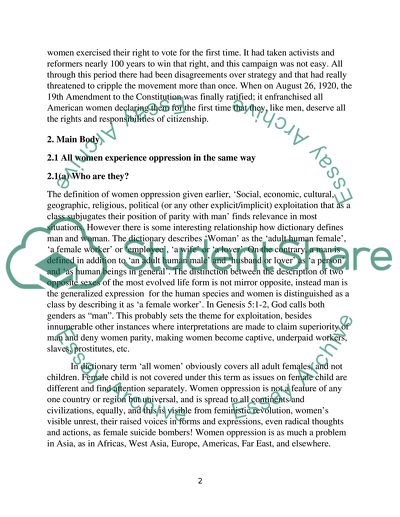Cite this document
(All Women Experience Oppression in the Same Way Dissertation, n.d.)
All Women Experience Oppression in the Same Way Dissertation. Retrieved from https://studentshare.org/social-science/1788641-all-women-experience-oppression-in-the-same-way-drawing-upon-examples-critically-evaluate-this-statement
All Women Experience Oppression in the Same Way Dissertation. Retrieved from https://studentshare.org/social-science/1788641-all-women-experience-oppression-in-the-same-way-drawing-upon-examples-critically-evaluate-this-statement
(All Women Experience Oppression in the Same Way Dissertation)
All Women Experience Oppression in the Same Way Dissertation. https://studentshare.org/social-science/1788641-all-women-experience-oppression-in-the-same-way-drawing-upon-examples-critically-evaluate-this-statement.
All Women Experience Oppression in the Same Way Dissertation. https://studentshare.org/social-science/1788641-all-women-experience-oppression-in-the-same-way-drawing-upon-examples-critically-evaluate-this-statement.
“All Women Experience Oppression in the Same Way Dissertation”, n.d. https://studentshare.org/social-science/1788641-all-women-experience-oppression-in-the-same-way-drawing-upon-examples-critically-evaluate-this-statement.


